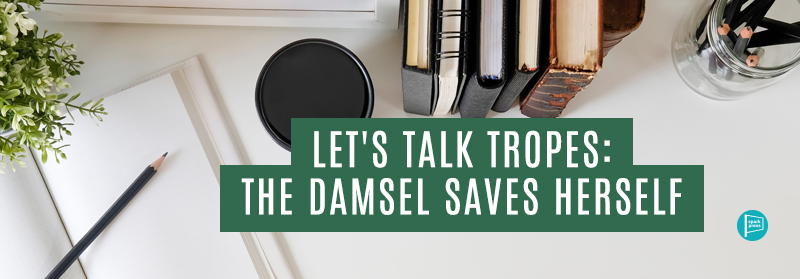
THE DAMSEL SAVES HERSELF
“You don’t need princes to save you. I don’t have a lot of patience for stories in which women are rescued by men.”
—Neil Gaiman
What is a Damsel in Distress?
We have seen the trope of the damsel in distress throughout the history of literature. We all know the story: a young unmarried woman gets put into a dangerous situation, and a big strong man comes to her rescue and they even fall in love because she is the prize for his deed. The trope of the damsel in distress goes as far back as Greek mythology, when we read the story of Andromeda who was chained to a rock, naked, only to be rescued by Perseus because he thought she was cute.
Male writers have inflamed the damsel in distress trope throughout time. While it is speculated writing stories about men saving women from distress inflates the male ego, it needs to be taken into consideration that women loved these stories for a very long while.
Damsel in Distress: In society
This trope has influenced our culture greatly. From society’s treatment of women, to politics, to household life, this trope has played a large part in men and women’s roles within society. As times have grown more progressive, and women’s empowerment and independence have become notably more popular, the damsel in distress has fallen from its once high pedestal.
There are internalized messages that occur when children are raised with stories of women who are inherently weak, because they cannot save themselves. The idea of the weak woman is a toxic narrative that has affected women in society in many ways. Women are damsels, society says. This gives the illusion that they are fragile creatures, guided only by whims and emotions. The power of this seemingly innocent narrative has helped mold the glass ceiling, keeping women from achieving success everywhere from boardrooms to politics. The damsel in distress trope is rooted in misogyny. This trope showcases the fragility of women. This is influencing the mental and physical healthcare women seek.
From Greek myths to Disney movies, society has depicted men as the hero. Today, the story of the woman who is incapable of saving herself feels tired and outdated as the world around us becomes increasingly more progressive.
Flipping the Narrative: The Damsel Saves Herself
In recent times, we have seen an increase in storylines where the protagonist of the story is a woman, usually headstrong and bold, who rescues herself out of dangerous situations and often times saves the world around her. There is a stark difference between the damsel in distress and the damsel who saves herself. The woman no longer stands idly by while a man swoops in to save the day.
There has been a cultural shift in the last ten years that empowers women to stand up for themselves. We can see this shift most clearly through movements such as #metoo. As art reflects life, when as a society we begin to bear witness to women finding their voices, speaking their truth, and standing against societal, patriarchal norms, we start to see it in the art and media we consume. From the we read books, to the shows and movies we watch, we witness more storylines than ever before where the woman does not back down from a fight. It is a beloved trope. From The Hunger Games to Wonder Woman, these are bestsellers and box office hits.
The Damsel Saves Herself: In society
The power this trope has not only over storylines, but also over society is tremendous. Women have begun to speak out against their abusers. More women are entering politics, a woman is the Vice President of the United States. The Pill is more easily accessible. Women can be CEOs, directors, doctors. Women can serve in the military, and more importantly, they can lead the military. While the art we consume features strong women saving the world, real-world women heroes are coming to the forefront.
One of the unique qualities of this trope is that it transcends genre. The Damsel Saving Herself is not always have to be an action packed fight sequence and whirlwind romance. It simply is about a woman, strong enough to pull herself up, and often times even those around her. This trope has only begun to see a rise in the last ten years. We can expect it to progress. There is no doubt we will see more damsels saving the world around her emerge in art for years to come.

Leave A Comment